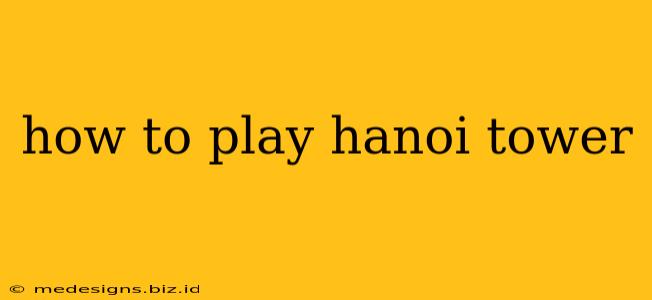The Tower of Hanoi is a classic mathematical puzzle that challenges your problem-solving skills. While it might seem simple at first, mastering it requires strategic thinking and planning. This guide will walk you through the rules, strategies, and solutions to conquer the Tower of Hanoi.
Understanding the Rules of the Game
The Tower of Hanoi puzzle typically consists of three rods and a number of disks of different sizes, each with a hole in the center. All the disks start stacked on one rod, in order of size, with the largest at the bottom and the smallest at the top. The goal is to move the entire stack of disks to another rod, following these rules:
- Only one disk can be moved at a time.
- A larger disk can never be placed on top of a smaller disk.
- Disks can only be moved between rods.
Seems simple enough, right? Let's explore how to approach the puzzle effectively.
Strategies for Solving the Tower of Hanoi
The solution to the Tower of Hanoi isn't about brute force; it's about developing a recursive strategy. Here's a breakdown of how to tackle the puzzle:
The Recursive Approach
The key is to break the problem down into smaller, self-similar subproblems. Imagine you want to move a stack of 'n' disks. Here's the recursive algorithm:
- Move the top n-1 disks from the source rod to the auxiliary rod. (This is a smaller version of the same problem!)
- Move the largest disk (the nth disk) from the source rod to the destination rod.
- Move the n-1 disks from the auxiliary rod to the destination rod. (Again, a smaller version of the original problem!)
This might sound complex, but it becomes much clearer with an example.
Solving a 3-Disk Puzzle
Let's solve a puzzle with 3 disks. We'll label the rods as Source (S), Destination (D), and Auxiliary (A).
-
Move the top 2 disks (n-1 = 2) from S to A: This involves applying the same recursive strategy again! First, move the smallest disk (1) from S to D. Then, move the next disk (2) from S to A. Finally, move the smallest disk (1) from D to A. Now the top two disks are on A.
-
Move the largest disk (3) from S to D.
-
Move the 2 disks from A to D: This is a mirror image of step 1. Move disk 1 from A to S, disk 2 from A to D, and disk 1 from S to D.
And there you have it! The entire stack is on the destination rod.
Tips and Tricks for Mastering the Tower of Hanoi
- Start small: Begin with a small number of disks (2 or 3) to understand the recursive process.
- Visualize: Mentally visualize the movements before physically making them.
- Practice: The more you play, the better you'll become at recognizing patterns and applying the recursive strategy.
- Online simulators: Many online Tower of Hanoi simulators can help you visualize the process and practice with different numbers of disks.
The Mathematical Background of the Tower of Hanoi
The minimum number of moves required to solve a Tower of Hanoi puzzle with 'n' disks is 2n - 1. This exponential growth demonstrates the puzzle's complexity even with a relatively small number of disks.
Conclusion
The Tower of Hanoi is more than just a game; it's a fascinating introduction to recursion and algorithmic thinking. By understanding the recursive strategy and practicing regularly, you can master this classic puzzle and appreciate its elegant solution. So, grab some disks (or use an online simulator) and start solving!
